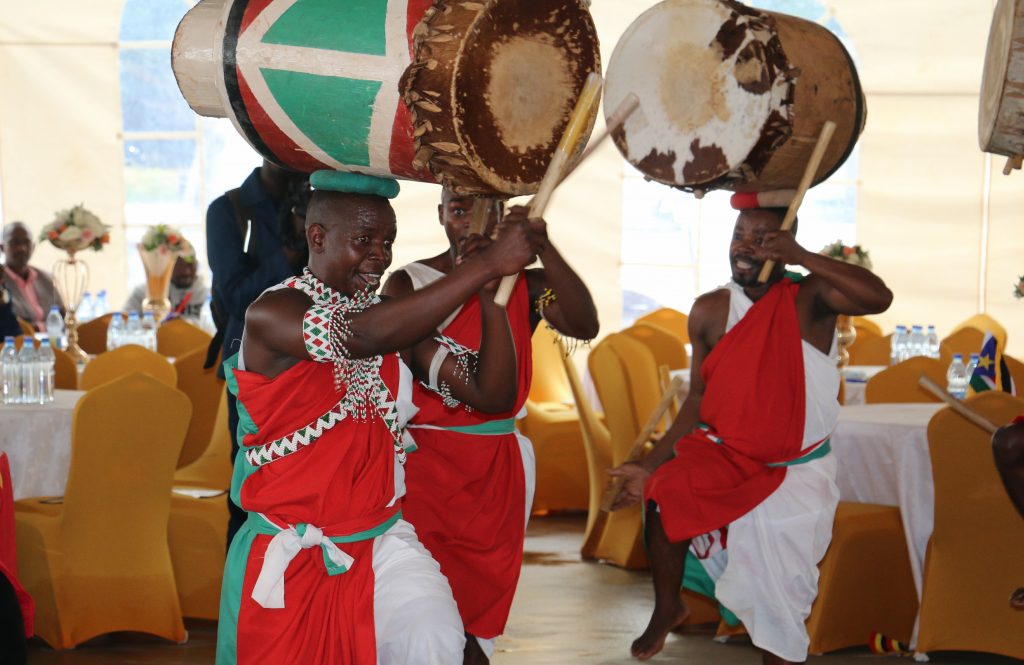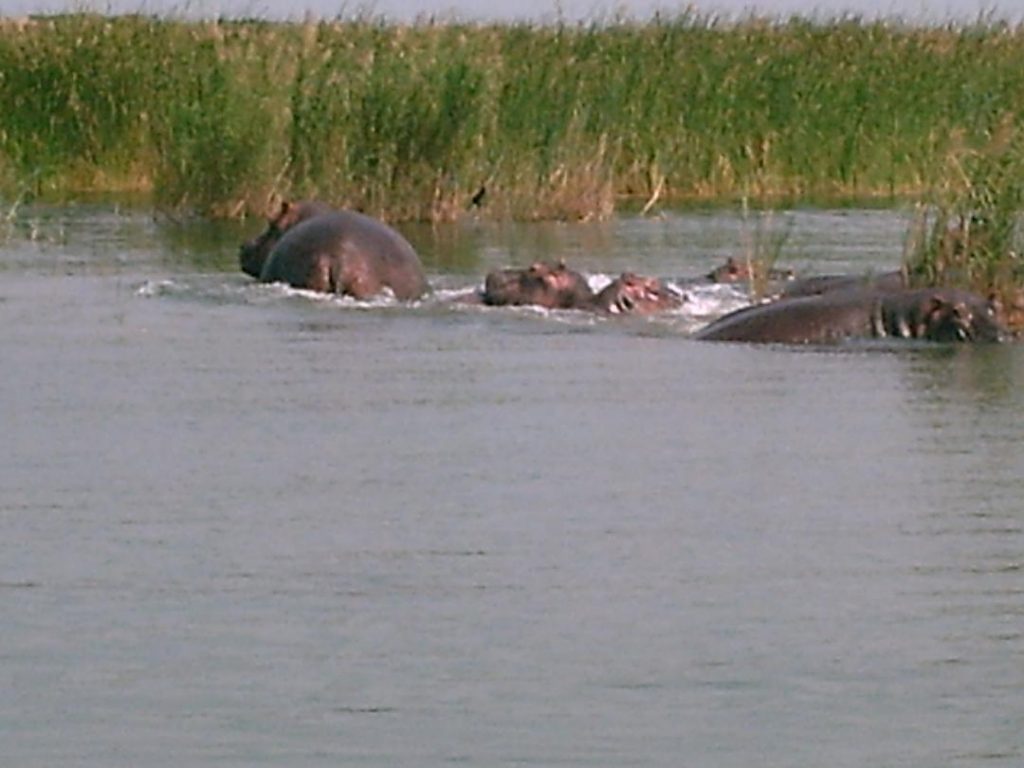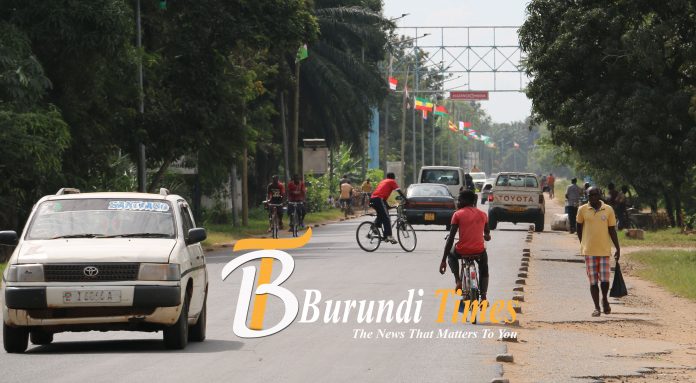Burundi also known as the Land of honey and milk is an east African Country covered by greens pastures, beautiful lakes and spring waters.
The first feeling that someone would get once visiting the country is the freshness of the air that Mother Nature provides in the land.
The tropical rain forests wherein monkeys and birds make beautiful melodies every day, the deepest lake Tanganyika providing mouthwatering fish called Mukeke; it bears a rich soil holding enormous natural resources, the greatest culture which reflects Burundian unity. In Kirundi they say: “Ahari ubumwe urusato rw’Imbaragasa rw’ifuka batanu” meaning that “where unity reigns, the skin of a spider would cover five people”; this quote had always been the ultimate definition of Burundian’s nature.
Tourism contributes up to 26% of the foreign exchange earnings for the country after coffee and tea.
Since 2010 there was a booming hotel business in Burundi with hotels coming up from 87 in 2010 to 380 in 2016.
Burundi’s royal drum

Burundi’s royal drum was inscribed in the list of intangible culture heritage by United Nations Educational Scientific and Cultural Organisation (UNESCO).
Burundi’s ‘umurisho w’ingoma’ ritual dance and Royal drum is now among the newly inscribed elements in UNESCO’s list of the intangible culture heritage (ICH) when the committee for safeguarding of the intangible culture heritage met in Paris in 2014.
The list of intangible cultural heritage of humanity involves elements that demonstrate the diversity of the heritage and the awareness rising about its importance.
The royal drums in Burundi were the pillars of the monarchical power and sacred which were used in only special occasions and important places that proclaimed the country’s great events such as the coronation of a monarch, the funeral of a sovereign and the new agricultural season.
Home to the drummers
Gishora in Gitega province located in the central part of the country is one of the most famous historical sites of Burundi drummers, the site is and was managed by the local community called the ABATIMBO. Gishora manage sanctuary drums as the Burundi’s culture tradition which restores the overall architectural kingdom in the country as the famous drummers present Burundi’s basic culture and heritage found in the center of the country.
Burundi drums have so far turned into leisure or as part of entertainment during official ceremonies.
All over the country, there are several groups of the ‘abatimbo’ which means the drummers formed and being regarded as an income generating activity in the country.
There are different kinds of dances in Burundi depending on which side of the country, the INTORE dance, “Intore” was the name given to the King’s warriors who defended him against the internal rebellions or the external attacks. The dance was mainly performed when the royal warriors are back from the battle field expressing their bravery dressed in leopards’ hides and wearing a wig made of sisals, with string of bells on their ankles.
The movement of the dace changes simultaneously, today this dance is performed during national and official ceremonies and is one of the attractions at northern part of Burundi in Kirundo province.
Burundi has 126 touristic sites countrywide, according to the Burundi tourism office.
Tourism sector in Burundi is expected to create employment amongst the youth in the country in efforts to fight against poverty, this policy is in the country’s vision 2025 under the poverty reduction strategy as tourism remains one of the pillars for the development for the country.
KIBIRA NATIONAL PARK.
The Kibira national park is the only mountain rainforest area of Burundi. It was created in 1933, while Burundi was still a part of Ruanda-Urundi, and institutionalized in 1980, together with other protected areas. It runs from Bugarama to the border of neighboring Rwanda. It covers four different provinces – Muramvya, Kayanza, Cibitoke, and Bubanza – before joining the Nyungwe forest in Rwanda. It culminates from 1600 to 2600 meters, the highest peak being the mountain Teza.
The Kibira national park is composed of three intact forester zones and several stories due to the different altitudes. Before 1933, the area was used for the hunts of Burundian kings. Its sacred character was a key to its preservation. It now shelters a very diverse ecosystem and is considered as a leading biodiversity reserve on the African continent. Thousands of fauna and flora species have been identified, most of them endemic, including bugs, birds, primates, reptiles and big mammals. 644 types of plant have been listed, a number of which eatable and herbs.
The park plays an essential role regarding the hydraulic system of the country, especially in the regulation of both Congo and River Nile. Moreover, several smaller river sources flow through the forest. It is estimated that around three quarters of the water going to the country’s largest dam actually come from this area. Thermal waters, known for their therapeutic virtues, also exist on the sides of the forest.
The Ministry of national education and culture of Burundi made a submission in 2007 for the Kibira national park to enter the UNESCO world heritage list.
RUVUBU NATINAL PARK. HOME OF FLORA AND FAUNA.

The largest ecosystem of the country covering 4 provinces of Muyinga, Karuzi, Ruyigi and Cankuzo. On both sides of the river frames Ruvubu high mountains, the park has an area of 50,800 ha. Its landscape is diverse with long mountain ranges, the constancy of the temperature is remarkable, oscillating between 19 and 23 degrees during the day. The rainy season covers a period from October to May each year.
The Ruvubu National Park of Burundi is the homeland of some of the most striking wildlife animals and species of flowers.
Here one can find more than 44 different mammal species belonging to more than 18 different families. 425 species of birds can also be observed in this park. Among the other species that can be found are the reptiles with crocodiles and a lot of different snakes. Wildlife in the Ruvubu National Park consists of animals like hippopotamus, buffalo, crocodiles, leopards, monkeys, antelopes, lions, etc.
The Ruvubu National park aims at preserving the endangered species of animals and birds. Human habitation had been evactuated from the park so that the different wildlife species could thrive well.
The Ruvubu National park of Burundi is easily accessible by road as it lies about 216 km away from Bujumbura and the park itself has about 60 km of tracks. Camping facilities for the visitors is the newest addition to the park and makes it more attractive. With the help of the UNESCO, security around the park was reinforced to prevent poaching, agricultural pressure and fires. . Protecting and preserving the wildlife and the beauty of the park is all the more important since Burundi puts a great emphasis on tourism and eco-tourism to promote a more sustainable development.

